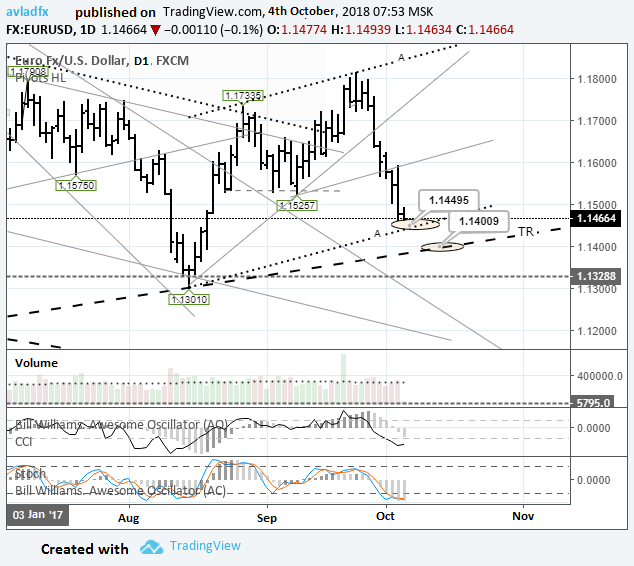Previous:
On Wednesday the 3rd of October, trading on the euro closed down. The single currency dropped to 1.1560 during the European session, before dropping further to 1.1465 in the US. This decline was brought about by positive US data as well as significant growth in US10Y bond yields.
The ADP employment report and services PMI data both exceeded market expectations. US bond yields rose to 3.17% before jumping further to 3.21% in Asia. I’m not ruling out the possibility that bond yields rose in response to Fed Chair Jerome Powell’s speech, because they didn’t react to the economic data. Powell said that the central bank was still far away from having a neutral rate, thereby hinting at a tight monetary policy in 2019.
According to Automatic Data Processing (ADP), 230k new private sector jobs were created in September (forecast: +185k, previous reading revised from 163k to 168k).
The ISM non-manufacturing PMI for September grew to 61.6 points, up from 58.6 in August.
Day’s news (GMT+3):

Fig 1. EURUSD daily chart.
Current situation:
My sense of the market has been off point this week. When I don’t understand something, I don’t make predictions. Given that market prices are swinging in all directions on the statements of officials, today I’ve uploaded the daily chart for our pair. We can clearly see that the bears are pushing towards the lower line of the A-A channel. Today’s bar runs through 1.1450, and the trend line through 1.1390. If the euro continues its decline against the greenback at this pace, the pair should reach the trend line (TR from 1.0340) at around 1.14. The correction on the growth from 1.1301 to 1.1815 has passed the 61.8% Fibonacci level. The 76.4% Fibo is at 1.1420 (around the trend line). We can expect a rebound from there.











Leave A Comment